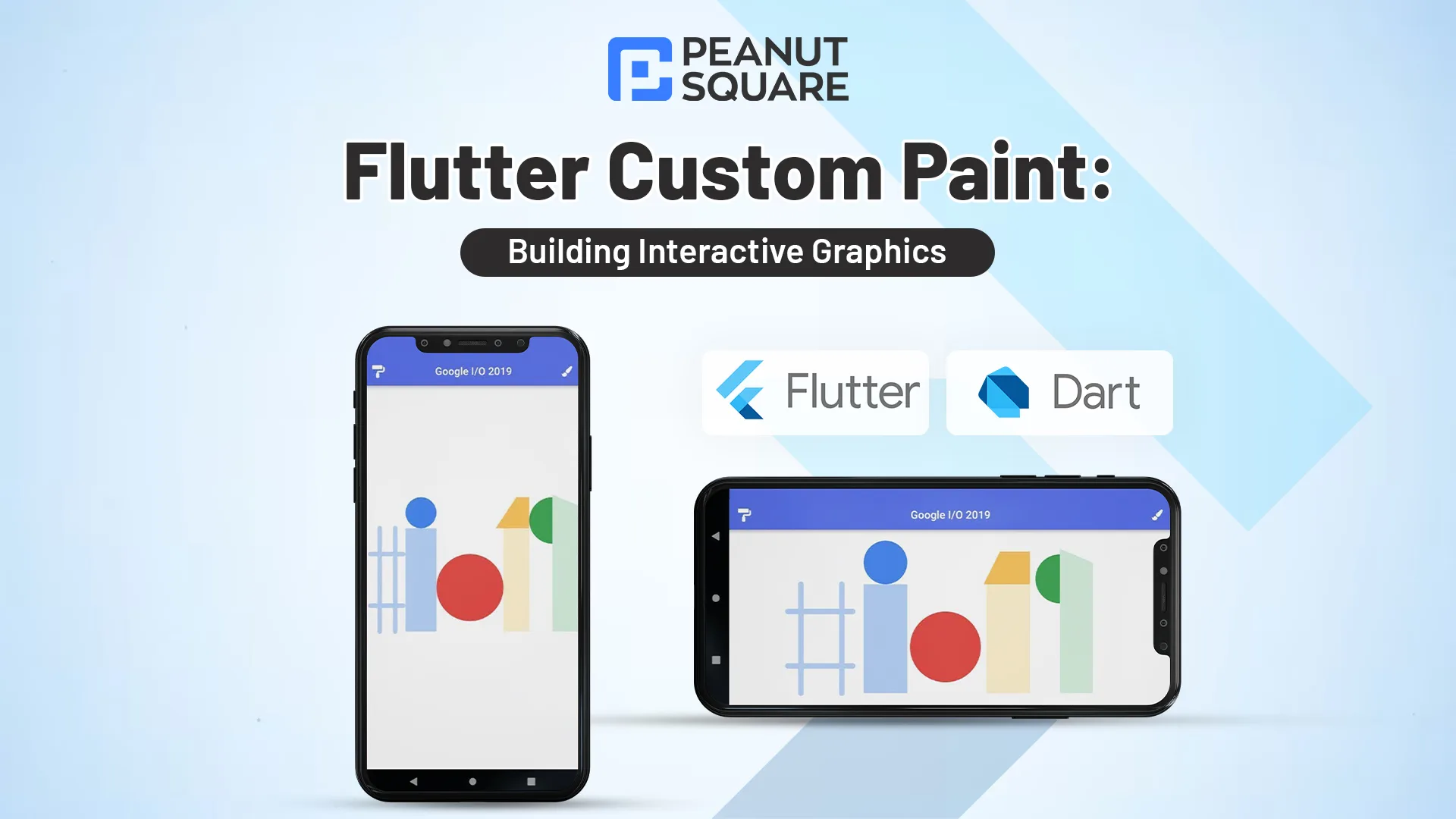Flutter Custom Paint: Building Interactive Graphics

31 October
Flutter, Google’s open-source UI toolkit, empowers developers to create stunning user interfaces. One distinctive feature that sets Flutter apart from other frameworks is “Custom Paint.” This feature enables developers to incorporate interactive graphics and custom designs into their apps. In this blog post, we will explore how to leverage “Flutter Custom Paint” to create interactive graphics.
Understanding the Custom Paint Widget
The Custom Paint widget in Flutter provides direct access for drawing and painting operations. It operates on a canvas, allowing developers to create graphical elements such as shapes, lines, curves, and gradients.
Practical Application: Drawing Interactive Charts
Consider a practical use case: displaying dynamic data in the form of a line chart. Users should be able to interact with the chart by tapping on data points to view specific details. Custom Paint simplifies this task significantly.
Step 1: Creating a Custom Paint Widget
Firstly, create a Custom Paint widget in your Flutter app:
class InteractiveChart extends StatelessWidget {
@override
Widget build(BuildContext context) {
return CustomPaint(
size: Size(300, 200),
painter: ChartPainter(),
);
}
}
Step 2: Implementing the Custom Painter
Next, create a custom painter class to handle drawing operations for Custom Paint:
class ChartPainter extends CustomPainter {
@override
void paint(Canvas canvas, Size size) {
Paint paint = Paint()
..color = Colors.blue
..strokeWidth = 2.0;
// Drawing the horizontal axis
canvas.drawLine(Offset(0, size.height), Offset(size.width, size.height), paint);
// Drawing data points (using static data for demonstration)
List<Offset> dataPoints = [
Offset(20, size.height - 20),
Offset(80, size.height - 50),
Offset(140, size.height - 10),
Offset(200, size.height - 70),
];
paint.color = Colors.red;
for (Offset point in dataPoints) {
// Drawing circles at data points
canvas.drawCircle(point, 5, paint);
// Drawing lines connecting data points
if (dataPoints.indexOf(point) < dataPoints.length - 1) {
canvas.drawLine(point, dataPoints[dataPoints.indexOf(point) + 1], paint);
}
}
}
@override
bool shouldRepaint(covariant CustomPainter oldDelegate) {
return false;
}
}
Step 3: Adding Interactive Behavior
To make the chart interactive, handle user interactions using the on Tap event:
class ChartPainter extends CustomPainter {
@override
void paint(Canvas canvas, Size size) {
// Drawing operations here
}
@override
bool shouldRepaint(covariant CustomPainter oldDelegate) {
return false;
}
@override
bool shouldRebuildSemantics(covariant CustomPainter oldDelegate) {
return false;
}
}
Conclusion
By leveraging the Flutter Custom Paint widget, you can seamlessly integrate interactive graphics into your apps. In this blog post, we’ve demonstrated how to create an interactive chart using Custom Paint. We hope this guide has helped you understand the significance of Flutter Custom Paint.
For more advanced techniques or specific use cases, we recommend exploring the official Flutter documentation and community forums. Happy coding!
Click Here For More Values!





